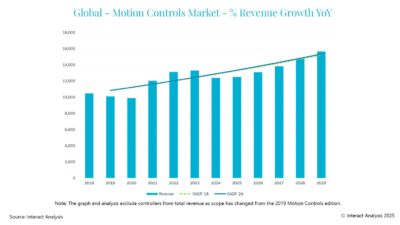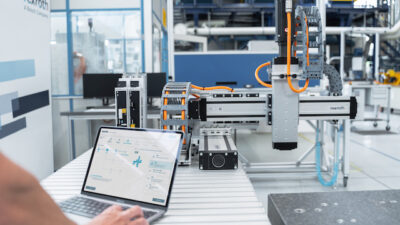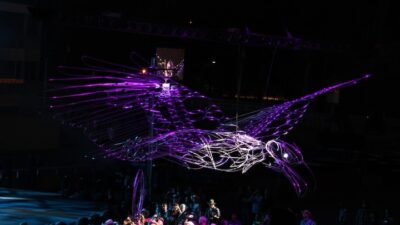To prevent frequent breakdowns and reduce downtime, Pressed Steel Tank (West Allis, WI) recently upgraded an obsolete CNC lathe with assistance from system integrator Nova Systems Inc. To help the retrofit succeed, Nova turned to Roy-G-Biv Corp. for a key piece of motion-control integration software.
To prevent frequent breakdowns and reduce downtime, Pressed Steel Tank (West Allis, WI) recently upgraded an obsolete CNC lathe with assistance from system integrator Nova Systems Inc. To help the retrofit succeed, Nova turned to Roy-G-Biv Corp. for a key piece of motion-control integration software.
The end-user and integrator report that their challenging project required renovating the 15-year-old lathe, which was built by an OEM no longer in business. The lathe produces seamless necks for metal tanks by spinning heated shells at high speeds, which results in forged-quality tanks. The tanks are suitable for holding oxygen, helium and argon, and are used in many applications, such as scuba diving, metal fabrication and medicine.
"Our customer was faced with a difficult situation," says Kenn Anderson, Nova’s engineering VP. "The system’s electronics were becoming very scarce, which made repairs expensive. What’s more, because of the customized nature of the old control technology, operator training had become a problem, and support was unavailable. They were also experiencing a lot of machine downtime." The lathe was reportedly breaking down for a couple of hours or days every few weeks.
The lathe previously had a two-axis controller, which used proprietary, Unix-based software developed by the original OEM. Both the lathe’s old and new software allow communication between its CNC controller and PLCs. Together, they execute programs that order the lathe to make the many precise passes needed to form the tank necks.
To minimize operator retraining and make the transition as seamless as possible, Pressed Steel asked Nova to maintain the familiar screens and commands of the CNC lathe’s old system. The manufacturer also wanted to keep the existing part programs. "Roy-G-Biv’s XMC machine-data communications platform software enabled us to do that, which helped our customer get up and running right away, and also enabled them to minimize labor costs," says Matt Vogen, Nova’s chief engineer on the project.
Adding motion axes
The new software solution required four axes of motion: two that spin the tanks and two for the pick-and-place gantry, which picks up and transfers the tanks between a spindle conveyor and an oven conveyor. Nova developed a customized human-machine interface (HMI) using Visual Basic to facilitate downloading of motion-control programs to Delta Tau’s PMAC-Lite CNC card controller, and maintain the old system’s appearance and functionality. Nova selected AlterSys’ ISaGRAF Enhanced for the lathe’s PLC control software, which presented the engineers with their biggest challenge.
"We wrote a customized front end or HMI program to input the correct dimensions for making the tanks, but we needed a Delta Tau driver for the ISaGRAF software, and we needed it fast."
Using XMC as the connectivity bridge between ISaGRAF software and Delta Tau’s hardware proved to be the answer. An OPC-based solution existed for this integration, but Nova reports that XMC provided a more efficient coupling between the motion controller and the real-time control software.
"We’ve probably helped knock 10-12 seconds off this process’ two-minute cycle time," adds Anderson. "This was also because fast servos were added to the Fibro pick-and-place machine, which moves the neck parts from the furnace to the lathe. This also meant that the parts didn’t have to be heated to as high a temperature, which saved even more time and energy." Two axes on Delta Tau’s PMAC run the lathe’s roller and in-feed functions, while the other two axes run the pick-and-place device.
Anderson adds that the 200 field I/O points on the lathe and its work cell are now DeviceNet enabled. They were discretely wired before the retrofit. These new I/O devices include Lutze’s DIOPC and Hilscher GmbH’s DeviceNet card, which talks to nodes running the digital I/O points.
"The upgrade works great and it’s making good parts, so the customer is happy," concludes Vogen.
For more information, visit www.controleng.com or visit www.novasystemsinc.com or visit www.roygbiv.com .



